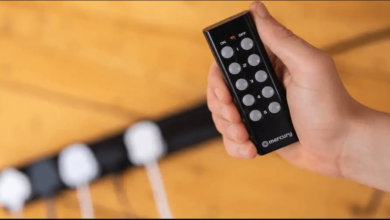How Retail Analytics Software Will Redefine Store Profitability in 2025

Remember when store profitability hinged on the charisma of your top salesperson or the placement of your best display? While those still matter, in 2025, retail is being reshaped by a less visible but far more powerful force: data.
And the unsung hero behind this transformation? Retail analytics software.
Today’s smartest retailers aren’t just reacting to yesterday’s sales reports; they’re using real-time insights to shape tomorrow’s decisions. From optimizing staffing to predicting what SKUs will fly off the shelves, modern analytics platforms are becoming the brain behind the storefront.
If you’re still relying on spreadsheets and instinct, you’re not just behind, you’re leaving money on the table.
Why Retail Operations Management Needs a Data Overhaul
Let’s face it: Retail operations management has never been easy. Coordinating inventory, staff, promotions, and customer expectations is like conducting an orchestra during a thunderstorm.
But what if you had a conductor’s sheet? Something that shows what’s working, what’s not, and what’s coming next?
That’s the role retail analytics software now plays. It turns fragmented data into crystal-clear insights. Instead of reactive firefighting, you get proactive control. That means:
- Reducing stockouts
- Avoiding overstaffing
- Catching sales slumps early
- Matching product placement to actual customer behavior
In other words, it helps you run a smarter, leaner, more profitable operation.
The Core Benefits of Retail Analytics Software in 2025
Know What Sells, Before It Sells Out
Gone are the days of guessing which products will move. Retail analytics software tracks historical trends, seasonal spikes, and even local weather patterns to forecast demand.
Result? You stock smarter, reduce markdowns, and increase sell-through rates, boosting profitability without increasing risk.
Smarter Scheduling That Saves Money
Labor is one of your biggest operating costs. But are you staffing based on real traffic patterns, or just gut feeling?
By integrating footfall data with POS performance, analytics tools help optimize your staffing decisions. This kind of insight-driven Retail operations management ensures you’re not overstaffed on slow Mondays or scrambling during surprise rushes.
Customer Behavior, Decoded
Where do customers linger? What paths do they take? Which promotions actually convert?
Modern retail analytics software can answer these questions using in-store behavior mapping. When store design and product placement reflect actual customer behavior, conversion rates increase, and so does profitability.
Real-Time Alerts for Real-Time Action
One of the biggest advantages of using analytics software is speed. Imagine being alerted mid-day that your top-selling product is running low or that a promotion is underperforming.
That means you don’t wait for the weekly report, you take action while there’s still time to change the outcome.
How It Transforms Retail Operations Management
Let’s connect the dots. Good data means better decisions across all areas of Retail operations management:
- Inventory Planning: Order only what you need, no more, no less.
- Vendor Management: Understand which suppliers are impacting margins or delivery timelines.
- Team Performance: Identify coaching needs, reward top performers, and reduce turnover.
- Marketing ROI: Tie campaigns directly to in-store performance, not just impressions.
When all of these levers are pulled in sync, you’re no longer guessing your way through the month. You’re managing with confidence.
New-Age Features Powering the Shift in 2025
The best platforms in 2025 don’t just report, they recommend. Here’s what’s making modern retail analytics software a game-changer:
- AI-Driven Forecasting: Predict customer demand and staffing needs with uncanny accuracy
- Unified Dashboards: Get data from sales, inventory, HR, and even camera systems in one place
- Mobile-First Insights: Managers access real-time data on the floor, no desktop needed
- Customizable KPIs: Focus on what matters most to your store, whether that’s foot traffic, conversion, or average ticket size
These aren’t just bells and whistles, they’re tools that give modern managers the edge they need.
What You Risk by Ignoring Analytics
Still thinking of data as a “nice-to-have”? Here’s what that mindset could cost you:
- Excess inventory is eating into margins
- Missed sales due to poor forecasting
- Low conversion rates from bad layout decisions
- Unoptimized labor costs are draining your budget
- Marketing campaigns that look good on paper but fail in-store
While competitors use analytics to fine-tune every square foot and payroll hour, retailers without it are stuck reacting, too late, too often.
Conclusion: Data Is the New Driver of Profitability
In 2025, the retailers redefining profitability aren’t always the ones with the flashiest stores; they’re the ones using the smartest tools.
Retail analytics software has moved from an optional upgrade to an operational necessity. And it’s not just about the software, it’s about building a culture where decisions are backed by data, not hunches.
If your Retail operations management strategy isn’t driven by insight, your competition will be. And in this environment, that gap will only grow wider.
FAQs: Retail Analytics Software & Operational Efficiency
Q1: How does retail analytics software improve store profitability?
It helps identify what products perform best, when to schedule staff, and how customers behave, leading to smarter decisions and higher margins.
Q2: Can analytics tools integrate with my existing systems?
Yes. Most modern solutions connect with POS, inventory, payroll, and even surveillance platforms for a 360-degree view of operations.
Q3: Is retail analytics software only for large chains?
Not at all. Many platforms are scalable and offer great value for independent retailers and regional brands looking to improve their Retail operations management.
Q4: How soon can I see ROI from implementing analytics software?
Retailers often begin seeing improvements in inventory turnover, staffing efficiency, and sales conversion within the first 60–90 days.
Q5: What makes analytics software better than traditional reports?
Traditional reports tell you what happened. Retail analytics software helps you understand why and what to do next.





